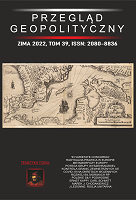Biometric technology in European Union border management after 2015
Biometric technology in European Union border management after 2015
Author(s): Sylwia ZawadzkaSubject(s): International relations/trade, Security and defense, ICT Information and Communications Technologies, Geopolitics, Asylum, Refugees, Migration as Policy-fields
Published by: Polskie Towarzystwo Geopolityczne
Keywords: biometrics; EES; ETIAS; migration crisis; Schengen area; smart borders;
Summary/Abstract: The aim of this paper is to examine the evolution of biometric control of the movement of people in the EU after the migration crisis and the impact of new largescale IT systems on improving EU security. In conditions of increased mobility and challenges related to illegal migration and organized crime, it is necessary to improve migration security in the Schengen area. The answer to these challenges is the implementation of the EU package of "smart borders", which is associated with the use of innovative technologies of control and information processing. The article presents a comparative analysis of two systems: Entry and Exit System (EES) and European Travel Information and Authorization System (ETIAS). Based on the Regulations establishing the new systems, the most important issues concerning their origins, objectives and principles of operation were analyzed. The main element of the research process was to identify and evaluate the determinants which indicate the usefulness of the systems in improving security in the Schengen area, as well as to assess the process of biometric authentication and its impact on the early detection of cross-border threats.
Journal: Przegląd Geopolityczny
- Issue Year: 2022
- Issue No: 39
- Page Range: 93-113
- Page Count: 21
- Language: English

